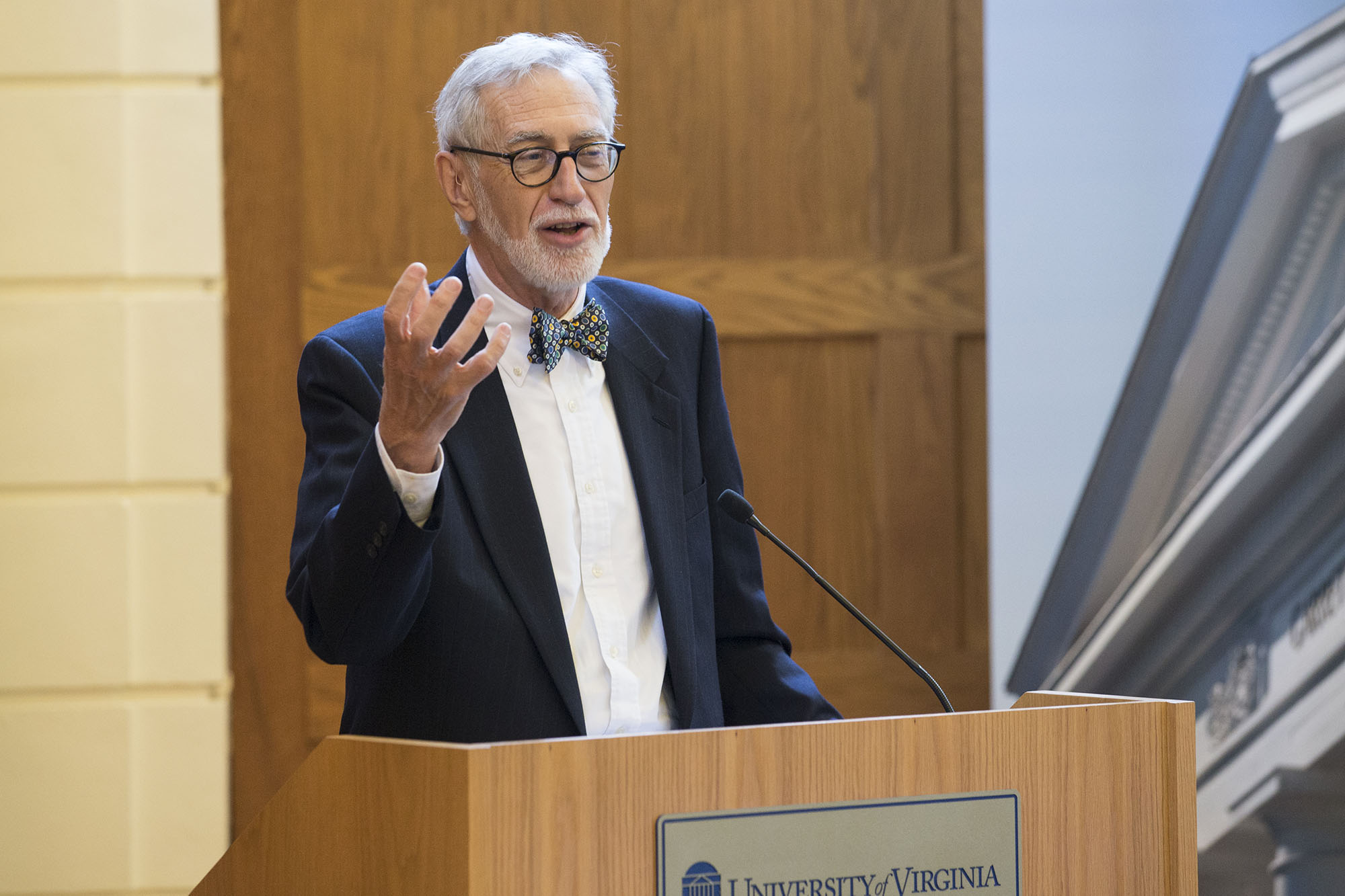The ongoing renovation of the University of Virginia’s Rotunda is not limited to the building itself; it also extends to the landscape around it.
The east and west courtyards and the north terrace all are being re-envisioned by award-winning landscape architect Laurie Olin, recipient of the 2013 Thomas Jefferson Foundation Medal in Architecture. Founder of the firm OLIN, his work includes designs of the Washington Monument grounds in Washington, D.C. and New York City’s Bryant Park.
For Olin, landscapes aren’t accessories to the built world; they are central to humans’ lived experience and memory.
“We have memories from every stage of our lives – childhood, adolescence and adulthood – of the plants and landscapes that surround us,” Olin said. “We are emotional about plants because they form our home and environment.”
Olin’s plans for the Rotunda include a complete reworking of the east and west courtyards that flank the centerpiece of Thomas Jefferson’s Academical Village. The east garden, which will remain dedicated to former U.Va. President Colgate Darden, will feature a small water garden.
“This will not be a big splashy fountain, but a basin with water burbling and aquatic plants, such as water lilies,” said Mary Hughes, landscape architect for the University.
Olin described the east garden – to be built over an underground room that will accommodate mechanical systems for the Rotunda – as an ideal spot to “sit quietly and have coffee in the morning sun.” Besides the new fountain, he envisions benches and flowering beds to enhance the space’s intimacy.
Renovated spaces in the Lawn-facing south wing of the Rotunda are being turned into classroom and activity spaces. While the east side will contain two classrooms, the west wing will have a large room that can be used for lectures, social gatherings and other functions. The west garden will be an extension of this space, with three doors that open from the wing into the courtyard.
The west courtyard, which will remain dedicated to former U.Va. President Edgar Shannon, will be paved with bricks and will be able to accommodate tables and chairs. The courtyard’s design includes four hawthorn trees, which grow about 20 feet tall – roughly even with the top of the balustrade on the Rotunda terrace.
On the University Avenue-facing north side of the Rotunda, Olin is seeking to make the plaza a more hospitable, functional public space. The north terrace is currently empty, save for two flagpoles, a sundial and a signature Jefferson statue. Olin’s design divides the terrace into three “subspaces” to lend greater visual definition and a welcoming feel, while retaining ample space for crowds to gather. Benches and small flowering Virginia fringe trees will add softness to the space without overwhelming it. The paving at the north plaza and courtyards will go from this winter to early summer and top soil and final grading will start around April and end around early summer. Plants will start to go in about April and end about early July.
In reimagining these outdoor spaces, Olin said he worried less about contemporary opinions of his designs and more about how Jefferson and White might regard them.
“Jefferson is the hero of American architecture,” he said. “To do work in conjunction with his architecture is challenging. He was my ghost critic.”
Olin opted for a simple approach that balanced the past, present and future.
“I wanted to give the spaces a character sympathetic to Thomas Jefferson’s design and deferential to the Rotunda itself. But I didn’t want to do fake history,” he said. “I wanted to create social spaces with the right scale for the building.”
Hughes thinks Olin’s plans make the terrace more accessible.
“It will make these spaces lighter, more usable and more pleasant,” she said. “They’ll be places where people want to be and can play an important role in the community for the next 200 years.”
Media Contact
Article Information
September 17, 2015
/content/thomas-jefferson-medalist-reimagines-rotunda-s-landscape

